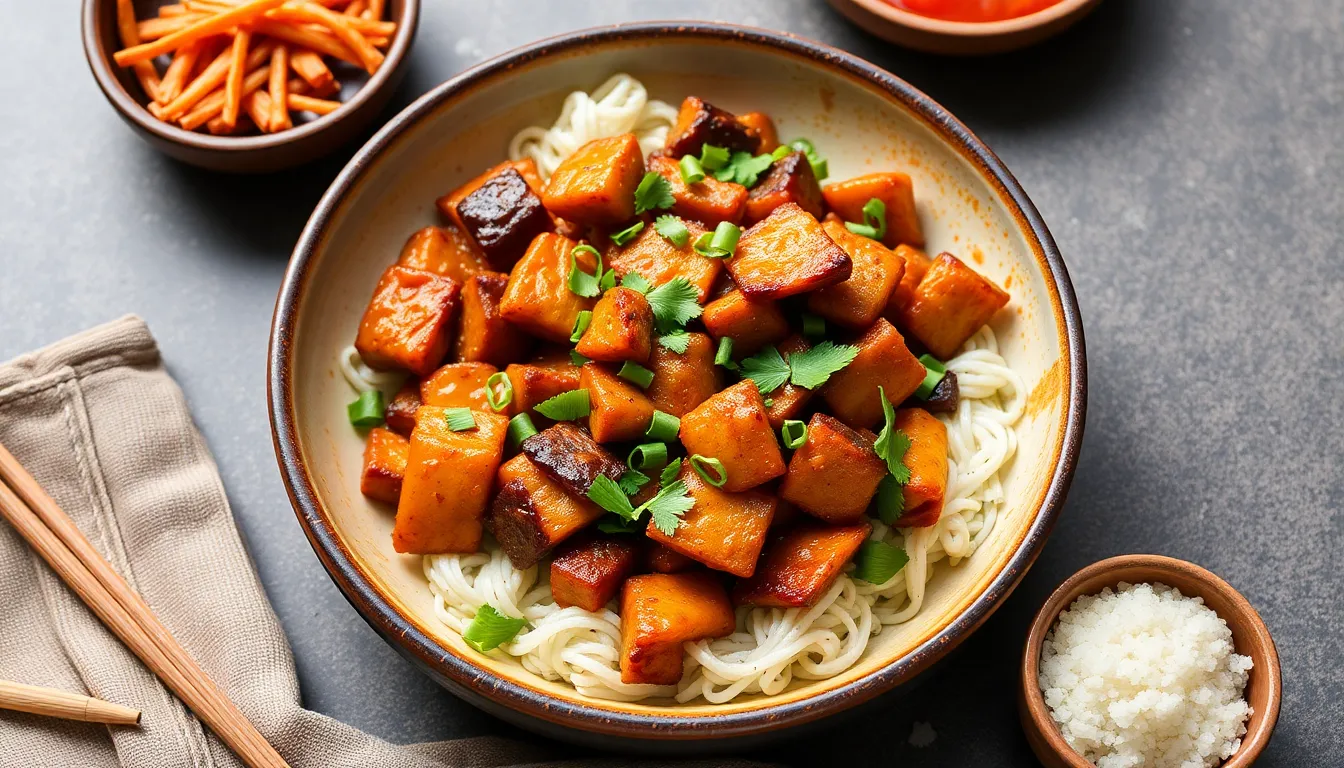Cooking with Herbs: How to Use Them in Grains and Legumes
Herbs have been an integral part of cooking for centuries, elevating dishes with their aromatic qualities and vibrant flavors. They not only add depth to our meals but also provide numerous health benefits, making them a staple in kitchens around the world. When it comes to grains and legumes, using herbs is a fantastic way to enhance their natural flavors, turning simple dishes into culinary delights.
In this article, we will explore the importance of herbs in cooking, particularly how they can transform grains and legumes. You will learn about the different types of herbs, how to choose the right ones, and discover popular pairings for grains and legumes. We’ll also share techniques for infusing your dishes with herbaceous goodness, ensuring your meals are both delicious and nutritious.
Section 1: Understanding Herbs
1.1 Types of Herbs
Herbs can be broadly classified into two categories: fresh and dried. Each type brings unique characteristics to your dishes.
Fresh Herbs
Fresh herbs are typically vibrant in color and have a high moisture content, making them perfect for adding a burst of flavor to dishes right before serving. Common examples include:
- Basil: Sweet and slightly peppery, excellent with tomatoes and pasta.
- Cilantro: Bright and citrusy, often used in Mexican and Asian cuisines.
- Parsley: Mild and versatile, great for garnishing or adding freshness.
Dried Herbs
Dried herbs have a concentrated flavor and a longer shelf life. They are ideal for cooking processes that require longer cooking times. Common examples include:
- Oregano: Earthy and robust, perfect for Italian and Greek dishes.
- Thyme: Subtle and slightly sweet, pairs well with meats and root vegetables.
- Rosemary: Pine-like and aromatic, it complements roasted dishes.
1.2 Choosing the Right Herbs
Selecting the right herbs can significantly impact the flavor profile of your dish. Here are some tips:
- Consider the Dish: Think about the primary flavors in your dish. For example, cilantro works well in dishes with citrus, while rosemary complements hearty meats.
- Personal Taste: Don’t hesitate to experiment with herbs you enjoy. Cooking is about personal expression.
- Seasonal Considerations: Use fresh herbs that are in season for the best flavor and quality. For instance, basil thrives in summer, while sage is often harvested in the fall.
Section 2: Cooking with Grains
2.1 Popular Grains and Their Pairings
Grains are a staple in many diets around the world. When paired with the right herbs, they can become a flavorful foundation for a variety of meals. Here are some popular grains and their best herb pairings:
| Grain | Best Herbs |
|---|---|
| Rice | Basil, Cilantro |
| Quinoa | Parsley, Chives |
| Barley | Thyme, Rosemary |
| Farro | Sage, Oregano |
2.2 Techniques for Infusing Flavor
There are several techniques for incorporating herbs into your grain dishes to maximize flavor:
- Boiling or Steaming: Add herbs directly to the water when cooking grains. This allows the flavors to seep in as the grains cook.
- Herb-Infused Broths or Stocks: Use herb-infused liquids instead of plain water for cooking grains. For instance, simmer vegetable stock with herbs like thyme or bay leaf before using it to cook rice or quinoa.
- Garnishing: Fresh herbs can be added as a garnish once the dish is plated. This not only enhances flavor but also adds a pop of color.
Section 3: Cooking with Legumes
3.1 Popular Legumes and Their Pairings
Legumes are protein-rich and versatile, making them a great addition to any diet. Similar to grains, they can be elevated with the right herb combinations. Here are some popular legumes and the best herbs to pair with them:
| Legume | Best Herbs |
|---|---|
| Lentils | Cumin, Coriander |
| Chickpeas | Parsley, Bay Leaf |
| Black Beans | Oregano, Cilantro |
| Kidney Beans | Thyme, Sage |
3.2 Techniques for Infusing Flavor
When cooking legumes, infusing them with herbs can enhance their earthy flavors:
- Soaking with Herbs: Soak dried legumes in water with herbs like bay leaves or sprigs of rosemary to impart flavor before cooking.
- Cooking with Broths: Similar to grains, cook your legumes in broth that has been simmered with herbs. This technique deepens the flavor.
- Finishing Touches: Use fresh herbs as a finishing touch in legume-based dishes like salads or stews to brighten the flavor.
Conclusion
Cooking with herbs can greatly enhance the flavors of grains and legumes, turning simple dishes into unforgettable meals. Understanding the different types of herbs, knowing how to select the right ones, and utilizing effective cooking techniques will empower you to create delightful dishes that are both nourishing and full of flavor.
As you explore the world of herbs, don’t forget to experiment and find combinations that suit your taste. Whether you’re preparing a comforting lentil stew or a fragrant quinoa salad, the right herbs will elevate your dish and delight your palate. Happy cooking!




